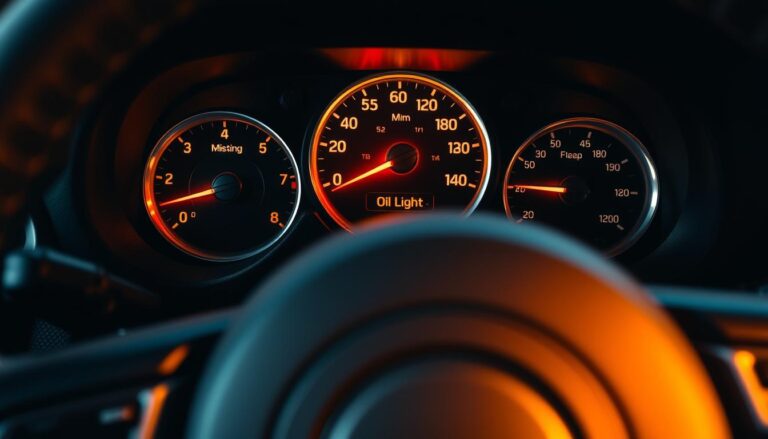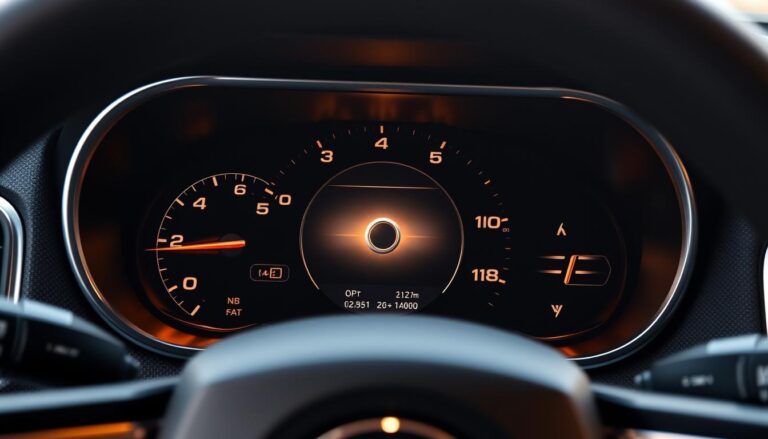In the realm of used Jeep Cherokee acquisition, it is imperative to discern the model years marred by substantial malfunctions. These years are often beset by issues that escalate repair costs and diminish vehicle performance.
Grasping the Jeep Cherokee problems inherent in certain model years is essential for making a well-informed purchase decision. This knowledge empowers you to circumvent potential financial burdens. By identifying the years to avoid, you can guarantee a dependable and long-lasting ownership experience with your used Jeep Cherokee.
Key Takeaways
- Identify problematic model years for used Jeep Cherokee
- Understand common issues associated with specific models
- Make an informed decision when purchasing a used Jeep Cherokee
- Avoid costly repairs by knowing which years to steer clear of
- Ensure reliability and durability in your used Jeep Cherokee purchase
The Evolution of the Jeep Cherokee
The Jeep Cherokee’s journey through time spans over several decades, marked by profound transformations. Its metamorphosis, driven by redesigns and updates, has sculpted it into the multifaceted SUV we recognize today.
A Brief History of the Jeep Cherokee
Emerging in the early 1970s, the Jeep Cherokee initially presented itself as a two-door model, later transitioning to a four-door variant. Its inception was characterized by its ruggedness and exceptional off-road capabilities. Through the years, the Cherokee has undergone a series of enhancements, aimed at refining its performance, comfort, and technological integration.

Major Generations and Redesigns
The Jeep Cherokee has traversed through several pivotal generations, each introducing substantial advancements. The XJ generation, spanning from 1984 to 2001, was celebrated for its compact dimensions and robust off-road performance. The KJ/KK generation, active from 2002 to 2007, marked a shift towards a more refined interior and enhanced on-road dynamics. The KL generation, active since 2014, heralded a new era with its contemporary design and cutting-edge technological features.
| Generation | Years | Notable Features |
|---|---|---|
| XJ | 1984-2001 | Compact size, off-road capability |
| KJ/KK | 2002-2007 | Refined interior, improved on-road performance |
| KL | 2014-present | Modern design, advanced technology |
Understanding Common Jeep Cherokee Problems
The Jeep Cherokee, renowned for its ruggedness, is not exempt from mechanical maladies. Over the years, a plethora of issues have been reported, impacting the vehicle’s performance and reliability.
Transmission Issues
Transmission problems have plagued the Jeep Cherokee across various model years. Symptoms include slipping, hesitation, and failure to engage gears correctly. These maladies can stem from faulty transmission sensors, software malfunctions, or mechanical failures within the transmission.
| Model Year | Transmission Issue | Common Symptoms |
|---|---|---|
| 2014-2015 | Faulty Transmission Sensors | Slipping, Hesitation |
| 2002-2007 | Mechanical Failure | Failure to Engage Gears |
Engine Problems
Engine malfunctions in the Jeep Cherokee span from oil leaks to engine stalling. Certain model years are more susceptible to these issues, often due to design or manufacturing flaws. Regular maintenance is crucial in preventing or mitigating these problems.
Electrical System Failures
Electrical system failures present as dashboard light malfunctions, infotainment system glitches, or issues with the vehicle’s computer. These problems can arise from software bugs, faulty wiring, or component failure.

Recognizing these common issues can aid both prospective buyers and current owners in identifying and addressing problems promptly. This proactive approach can potentially save time and financial resources.
Jeep Cherokee Years to Avoid
Acquiring a used Jeep Cherokee necessitates an understanding of the model years marred by significant problems. This vehicle, favored by off-road enthusiasts and daily commuters, has experienced issues in certain model years, impacting its reliability and overall ownership experience.
First Generation (XJ) Problem Years: 1984-1990
The XJ generation, spanning from 1984 to 2001, is notable for its early years’ issues. From 1984 to 1990, the Cherokee faced transmission problems and electrical system failures, making these years the most problematic.
Transmission malfunctions, such as slipping or failure to engage, were prevalent in 1984-1986 models. The electrical system in these early models was also prone to shorts and failures, resulting in dashboard light and accessory malfunctions.
Second Generation (KJ/KK) Problem Years: 2002-2007
The KJ/KK generation, produced from 2002 to 2007, encountered issues with the engine and transmission. Owners frequently reported engine cooling system failures leading to overheating, and the transmission often failed prematurely.
Further, the 2002-2004 models were more susceptible to engine failure due to a faulty engine block design. It is crucial for potential buyers to review the vehicle’s maintenance history and inspect for signs of these issues.
Third Generation (KL) Problem Years: 2014-2017
The KL generation, introduced in 2014, also faced problems, notably in the 2014-2017 models. The nine-speed transmission was a common issue, with owners experiencing hesitation and rough shifting. Some models also suffered from engine stalling due to software glitches.
The 2014 model’s electronic control module (ECM) was known to cause erratic engine behavior and dashboard warning lights. Buyers should exercise caution with these models and consider a comprehensive inspection.
Fourth Generation Problem Years: 2018-2020
The fourth generation, starting in 2018, has generally been more reliable than its predecessors. Yet, the 2018-2020 models have reported issues with the infotainment system and connectivity issues with Apple CarPlay and Android Auto.
While these problems are less severe than those in earlier generations, they can still be a source of frustration. Potential buyers should thoroughly test the infotainment system during a test drive to ensure it functions as expected.
The Most Problematic Model:2014 Jeep Cherokee
The 2014 Jeep Cherokee is widely regarded as a model year to steer clear of, due to its plethora of issues. This section will explore the specific challenges faced by this model, encompassing transmission malfunctions, engine stalling, and problems with the electronic control module.
Nine-Speed Transmission Failures
The 2014 Jeep Cherokee’s nine-speed transmission has been a major source of frustration. Owners frequently report rough shifting, hesitation, and outright failure of the transmission. For a comprehensive understanding of this issue, refer to Haynes Blog for in-depth analysis.
Engine Stalling Issues
Engine stalling has been a prevalent concern among 2014 Jeep Cherokee owners. This problem can be perilous, as it may occur unexpectedly, potentially resulting in accidents. The root causes span from faulty sensors to fuel system malfunctions.
Electronic Control Module Problems
The Electronic Control Module (ECM) is vital for the vehicle’s operation. In the 2014 Jeep Cherokee, ECM malfunctions have triggered a variety of problems, including erratic engine behavior and failure to start. Identifying ECM issues is intricate and often necessitates specialized tools.
| Issue | Description | Potential Consequences |
|---|---|---|
| Nine-Speed Transmission Failures | Rough shifting, hesitation, and failure | Stranding, costly repairs |
| Engine Stalling Issues | Engine stalls without warning | Accidents, inconvenience |
| Electronic Control Module Problems | Erratic engine behavior, failure to start | Stranding, costly diagnostics |
Specific Issues by Model Year
Delving into the model-specific maladies of the Jeep Cherokee is crucial for prospective buyers. The vehicle’s dependability and performance exhibit considerable variability across model years, with some years being more susceptible to particular issues.
2000-2001 Models: Transmission Failures
The 2000 and 2001 Jeep Cherokee models are afflicted with transmission malfunctions, leading to expensive repairs. Symptoms manifest as slipping, hesitation, and an inability to engage gears correctly. Proactive maintenance and diagnostic assessments can aid in early detection of these problems.
2005-2006 Models: Engine Problems
Engine-related issues are prevalent in the 2005 and 2006 models, encompassing overheating and oil leaks. These maladies can precipitate substantial engine damage if not rectified expeditiously.
2014-2015 Models: Electronic and Software Problems
The 2014 and 2015 Jeep Cherokee models are beset by electronic and software-related issues, including malfunctions with the infotainment system and other critical electronic subsystems. These problems can be vexing and may necessitate software revisions or the replacement of defective components.
2019-2020 Models: Recall Information
Certain 2019 and 2020 models have been the subject of recalls due to various issues, including defects with the backup camera and other safety functionalities. It is imperative for buyers to scrutinize the vehicle’s recall history prior to acquisition.
Repair Costs for Common Jeep Cherokee Issues
The financial implications of repairing common issues in Jeep Cherokee vehicles are substantial, affecting the overall cost of ownership. Prospective buyers must consider these potential expenses to make an informed decision regarding a used Jeep Cherokee.
Transmission Replacement Expenses
Transmission malfunctions are prevalent among Jeep Cherokee owners. The expense of transmission replacement varies widely, from $1,500 to $3,500, contingent upon the model year and the severity of the damage. The 2014 Jeep Cherokee, with its intricate nine-speed transmission, often incurs higher repair costs due to its complexity.
Engine Repair Costs
Engine-related issues, such as oil leaks, stalling, and faulty timing chains, can result in considerable repair expenses. Engine repairs for the Jeep Cherokee typically fall within the range of $1,000 to $3,000. Yet, more critical problems, like engine block damage, can escalate costs beyond $5,000.
Electrical System Diagnostics and Fixes
Electrical system failures, including issues with the Electronic Control Module (ECM), pose diagnostic and repair challenges. The cost of diagnosing such problems can range from $100 to $500. Repairs can add an additional $500 to $1,500, depending on the complexity of the issue.
Grasping these potential repair costs is essential for prospective buyers to accurately assess the total cost of ownership. This understanding aids in determining whether a used Jeep Cherokee represents a sound investment.
The Most Reliable Jeep Cherokee Years
In the realm of used Jeep Cherokees, certain model years emerge as paragons of reliability and performance. The evolution of the Jeep Cherokee has been marked by several redesigns and enhancements, with some generations exhibiting superior dependability.
The XJ generation, spanning from 1984 to 2001, is celebrated for its endurance and prowess in off-road terrain. The years 1997-2001 within this generation are distinguished by their exceptional reliability.
XJ Generation Standouts (1997-2001)
The XJ generation’s 1997 to 2001 models are lauded for their powerful engines and transmissions. These vehicles are equipped with the 4.0L inline-six engine, celebrated for its durability and longevity. The transmissions in these models are also engineered to endure the challenges of off-road driving.
KL Generation Improvements (2018-Present)
The KL generation, initiated in 2014, witnessed substantial enhancements beginning with the 2018 models. These enhancements include upgraded engine software and enhanced transmission calibration, resulting in enhanced performance and reliability. The 2018 and subsequent models are regarded as more dependable due to these advancements.
What Makes These Years Better
Several elements contribute to the reliability of the standout Jeep Cherokee models. These include improved manufacturing processes, better component quality, and software updates aimed at resolving previous issues. As a consequence, the 1997-2001 XJ generation and the 2018-present KL generation models are deemed more reliable, making them attractive options for those in the market for a used Jeep Cherokee.
How to Inspect a Used Jeep Cherokee
The process of inspecting a used Jeep Cherokee necessitates a meticulous examination of several critical areas to ascertain its overall state. A thorough inspection can help buyers avoid costly surprises down the road.
Key Mechanical Checks
Initiate the inspection by focusing on key mechanical components. This entails scrutinizing the engine for any signs of leaks or excessive wear, evaluating the transmission’s performance for smooth shifting, and assessing the brakes for proper functionality.
Key areas to inspect:
- Engine condition
- Transmission performance
- Brake system
Electronic System Verification
Subsequently, verify the electronic systems. Inspect the infotainment system, Bluetooth connectivity, and other features to confirm their correct operation. It is imperative to test the vehicle’s lighting and electrical accessories as well.
Test Drive Essentials
During the test drive, focus on the vehicle’s handling on the road. Pay attention to any unusual noises, verify smooth acceleration, and ensure there is no unusual vibration.
| Test Drive Checklist | Notes |
|---|---|
| Smooth acceleration | |
| Unusual noises | |
| Braking performance |
By adhering to these steps, buyers can comprehensively inspect a used Jeep Cherokee, enabling them to make a more informed decision.
Conclusion
In the context of acquiring a pre-owned Jeep Cherokee, it is imperative to discern the model years that should be circumvented due to prevalent maladies. As previously elucidated, specific iterations and model years have been marred by transmission, engine, and electrical system malfunctions.
The years to eschew include the inaugural models beset by transmission maladies, the 2014 model year, notorious for its nine-speed transmission failures, and other years identified in preceding sections. Acquaintance with these issues can avert future inconveniences.
To facilitate a seamless acquisition, adhere to the guidelines for purchasing a used Jeep Cherokee, encompassing meticulous inspections of the vehicle’s mechanical and electronic configurations, and engaging in a test drive. Such diligence will empower you to make an enlightened choice, ensuring the longevity and enjoyment of your pre-owned Jeep Cherokee.
FAQ
What are the most common problems with the Jeep Cherokee?
The Jeep Cherokee is plagued by transmission malfunctions, engine failures, and electrical system defects. These issues are not uniform across all model years and generations, necessitating a detailed examination of each vehicle’s history.
Are there any specific Jeep Cherokee model years that I should avoid?
Certain model years, such as the 2014 Jeep Cherokee, are marred by significant problems. These include issues with the nine-speed transmission, engine stalling, and malfunctioning electronic control modules, rendering them less desirable for purchase.
What are the repair costs for common Jeep Cherokee issues?
The cost of repairs for common issues can be substantial. Transmission replacements are among the most expensive repairs, while engine repairs and diagnostics of electrical systems also contribute to the overall expense.
How can I inspect a used Jeep Cherokee to ensure it’s reliable?
To assess the reliability of a used Jeep Cherokee, conduct thorough mechanical inspections, verify the functionality of electronic systems, and undertake a test drive. This comprehensive approach will help identify any potential problems.
What are the most reliable Jeep Cherokee years?
The XJ generation, spanning from 1997 to 2001, and the KL generation, starting from 2018, are generally regarded as more reliable. These models have fewer reported issues, making them preferable for those seeking a dependable vehicle.
What should I check during a test drive of a used Jeep Cherokee?
During a test drive, listen for any unusual noises or vibrations and observe the vehicle’s performance. Also, scrutinize the dashboard for any error messages or warning lights, as these can indicate underlying issues.
Are there any recalls on certain Jeep Cherokee model years?
Yes, certain model years, including 2019-2020, have been subject to recalls. It is imperative to verify the vehicle’s history and check for any outstanding recalls before making a purchase.
Can I still buy a used Jeep Cherokee with known issues?
While it is feasible to acquire a used Jeep Cherokee with known issues, it is crucial to consider the potential repair costs. Evaluate whether the vehicle’s value still justifies the investment, taking into account the necessary repairs and maintenance.


